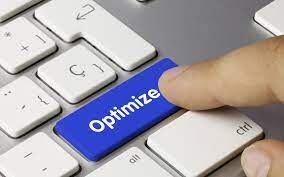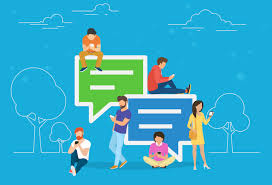
Optimize Your Messages for Maximum Impact.
We all are inundated with messages. Our email inbox is perpetually overloaded. Many of us hear text beeps many times per hour (or per minute), and our various other apps and “messenger” add-ons to those apps are singing to us constantly.
This is 2021. Our phones are incessantly interrupting whatever we are doing.

So how do you get past all the noise and relay an important message to your audience?
First, you have to catch their attention. Then you have to keep their interest. Finally, you have to respect their time so they want to receive your subsequent messages.
Don’t Cry Wolf.
 Based on the frequency and importance of each message, your audience will learn how seriously to take your messages. If you send too many messages, that waters down the effect of each one. If you use all the types of communications channels each time, that reduces the impact of the message. Pick the message type that fits the urgency and priority of your message. If the message is not relevant to somebody – don’t send it to them. And if you have many messages, your audience will appreciate you combining them and minimizing the interruptions on their lives.
Based on the frequency and importance of each message, your audience will learn how seriously to take your messages. If you send too many messages, that waters down the effect of each one. If you use all the types of communications channels each time, that reduces the impact of the message. Pick the message type that fits the urgency and priority of your message. If the message is not relevant to somebody – don’t send it to them. And if you have many messages, your audience will appreciate you combining them and minimizing the interruptions on their lives.
Respect their time and they will respect you in return by reading or listening to your messages.
Types of Messages and How They are Best Used.
Emails.

Emails, by far, are the most commonly delivered message type. They are easy to send, flexible with their content, and fairly easily organized by the recipient. Downsides include the fact that they are commonly lost amongst the morass of emails that most people receive on a daily basis, which is further exaggerated by the fact that most mass email systems struggle to keep emails out of SPAM filters.
When you need to send out a large volume of information, there is no substitute to an email. If it is non-urgent information that they may need at a later time, email is the best approach organize so they can move it into the appropriate email folders.
As is the case with all types of messages, you do not want to send them too many emails. Regardless of the message type, even if it’s the least disruptive type, one needs to limit the message to items that are relevant and meaningful to the recipient.
Text Messages.
 Many people hear a sound and look at every text message received. The fact that a text message is a genuine interruption for these people is useful, but it is also a messaging mechanism that is easily overused. If you are sending text messages, think about the fact that somebody may stop what they are doing to look at – you should decide if it’s something you would want to be interrupted to read. If not, consider using a less disruptive message type for this message.
Many people hear a sound and look at every text message received. The fact that a text message is a genuine interruption for these people is useful, but it is also a messaging mechanism that is easily overused. If you are sending text messages, think about the fact that somebody may stop what they are doing to look at – you should decide if it’s something you would want to be interrupted to read. If not, consider using a less disruptive message type for this message.
Text messaging a great tool for time-sensitive messages. To use it that way, you should seriously consider a texting solution that includes: (1) Unlimited length texts, and (2) The ability to include links in the text message.
Unlimited Length Texts.
The reason that an unlimited length text is important is that you are interrupting the person so you want to make sure you can get the complete message to them. If limited to 160 characters, you are asking them to be a puzzle solver to unscramble the abbreviations you may need to use.
Links Within Texts.
Allowing links within text messages is powerful. It enables you to remind people of time-sensitive events, such as a Zoom meeting starting in a few minutes. You can include the link to the meeting right in the text. You an also pre-record a video in a private YouTube channel and include the link to that video directly in the text message.
Voice Calls.
 The beauty of the automated voice call is that virtually everybody has a mobile phone and most people’s phones ring when a call arrives. If you have a time-sensitive announcement, there is nothing more effective (or more disruptive) than a phone call. That is a good thing if used correctly, and a bad thing if overused. It’s the text message scenario, but at a more extreme level.
The beauty of the automated voice call is that virtually everybody has a mobile phone and most people’s phones ring when a call arrives. If you have a time-sensitive announcement, there is nothing more effective (or more disruptive) than a phone call. That is a good thing if used correctly, and a bad thing if overused. It’s the text message scenario, but at a more extreme level.
Time sensitive messages are best sent by voice. Changes in meeting venues, school delays, emergency evacuations, attendance or overdue fee reminders are all examples of the effective use of automated phone calls.
Use the Caller ID of the Automated Call for Easy Message Playback.
One thing you should look for with an automated phone call system is the ability of the automated call’s Caller ID to be a phone number that plays the message back when called back. Not everybody answers their phone and will often just call the number instead of taking the time to listen to their voice mail.
Automated Call Should Play the Message At The Right Time.
Another important aspect of an automated call is to find a system that does not delay when speaking, but also leaves a full message in the voice mail when the person does not answer. Finding this combination in the audio-detect algorithms of an automated dialer is fairly rare, so it is something that you will want to try out before making a purchase decision. If there is a delay when somebody answers, the tendency is to assume it is an unwanted solicitation and the recipient will hang up. If it doesn’t leave a full voice mail, which is an extremely common problem with most automated dialers, instead of a message the recipient is given a frustrating experience.
Social Media Posts.
 You can always post your social media messages at or around the same time as sending your direct messages. It is easier, however, if you can simply have it do the posting automatically when sending the message. More importantly, if you pre-schedule a message to go out in the future, you can pre-schedule the social media post to happen at the exact same time.
You can always post your social media messages at or around the same time as sending your direct messages. It is easier, however, if you can simply have it do the posting automatically when sending the message. More importantly, if you pre-schedule a message to go out in the future, you can pre-schedule the social media post to happen at the exact same time.
Instant Messaging

These days instant messaging is becoming more and more popular for two-way communication. The tools used, however, tend to be different from those used to burst out mass notifications. Therefore, you tend to need to manage yet another database of contacts and go to a new place to launch a two-way communication. When you need to do a group-level many-way communication, the situation gets even more complex.
For schools, you can find tools like Remind and ClassDojo for two-way communication. These tools are separate from other communication tools, requiring that the teacher or coach manage their own database, and they don’t lend themselves to school-wide or district-wide oversight. Having your instant messaging in the same platform, as BrightArrow provides with BrightChat (https://brightarrow.com/solutions/education/brightchat/), consolidates your messaging and essentially extends your existing mechanisms to allow two-way discussions.
Lots Of Tools in Your Toolbox

We have all types of tools and mechanisms available to send messages. We all have a basic email environment, and most of us have a variety of programs to send various types of texts, push notifications, and other messages. The challenge we face is that each mechanism has its own database for adding and managing contacts, and our message recipients may not receive all the message types that we send.
The ideal messaging toolbox has the following characteristics:
- All message types originate from one interface, including emails, text messages, automated voice calls, push notifications, social media posts, and two-way instant messaging
- The database of message recipients is in one common place; and if the place is outside of your messaging system, then the messaging system should synchronize with it.
- If practical, provide a way for the message recipient to self-manage what kinds of messages they want to receive.
- If your message recipient is not English-speaking, the system should auto-translate.
- You should only send the messages to those for whom it is relevant. The system should have an easy way to apply contact filters so you can pick out the right people each time.

I hope that the above thoughts and ideas will help you as you refine and update your communication tools and techniques. You might find that BrightArrow, and especially its latest features, can provide a nice toolbox to enhance your ability to effectively communicate to your constituents. We welcome your feedback of additional ideas of ways you have found to further streamline and enhance the delivery of messages to the people you serve and work with.



